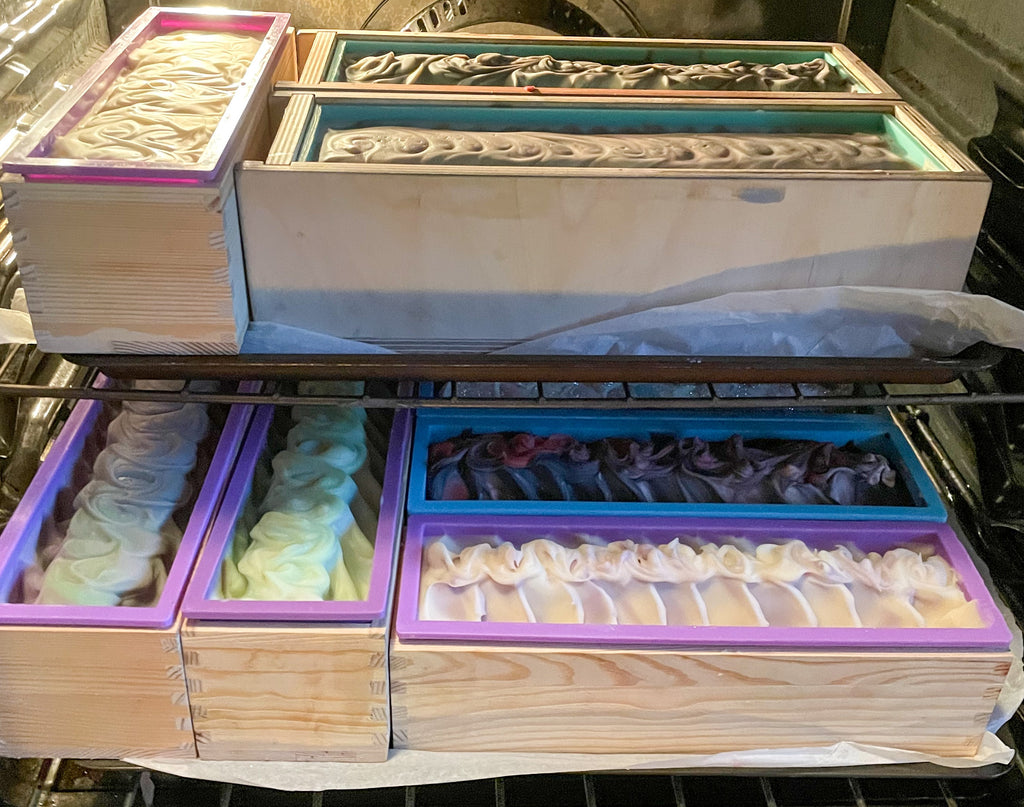I’m going to start posting with some intention on this page. So I’m introducing Teaching Tuesday, a way to explain why I make some of the choices I make with my processes or the ingredients that I use.
For this first Teaching Tuesday I want to explain how my oven plays a part in my soap making. I will sometimes mention “I need to get my soap out of the oven” or “my oven smells like soap”. The typical response I get from people is “you cook your soap?!”
There is actually a method of soap making, hot process soap, that does involve cooking to make your soap, but not in an oven. That’s not the kind of soap I make though. I do utilize my oven, but I make cold process soap and oven process it or CPOP for short.
For cold process soap you combine oils and butters with a lye water solution. Once combined properly these ingredients go through the saponification process which turns it into soap. As it is going through this process the soap batter heats up, up to 180°F. When heated the soap may go through something called gel phase. A lot other things are happening during the saponification process as well, but we can save that for another day.
Gel phase is something soap makers talk about all the time. Some soapers try to avoid it, while others want to encourage it. Gel phase can give your soap a more translucent appearance, it also makes your colors more vibrant. Sometimes if the inside of your soap is hot but the air around the soap loaf is cool you will achieve something called partial gel, this is usually when there is a ring of brighter colors in the center of the soap and the colors are more muted around the edges.
To avoid gel phase you try and keep your soap as cool as possible. Some soap makers will go as far as putting their freshly poured soap in the freezer to try and keep it cool. This is often something done when milk is used in soap making to avoid scorching your milk.
I, on the other hand, want to encourage gel phase. I love vibrant soaps and the consistency of soap that has gelled. To encourage gel phase you introduce heat. Not a lot of heat, but some heat. How I go about achieving gel phase with my soaps is by heating the oven to it’s lowest setting and then turning it off. I also turn the oven light on. Once my soap is poured, it’s placed in the warm oven and left to sit overnight. The oven is already warm inside and leaving the light on provides just enough heat to keep my soaps cozy for 8-12 hours.
Once out of the oven I let the soap loaves sit to come to room temperature naturally, this usually takes another 8-10 hours. Once the soap has cooled it is generally ready to be cut. Then I get to see the inside and the vibrant colors I was going for.
So no, I don’t cook my soap, it cooks itself, I just help it along for my personal aesthetics.
Tax included and shipping calculated at checkout

